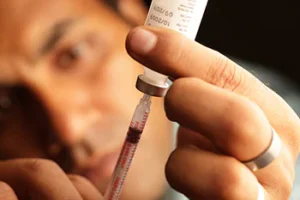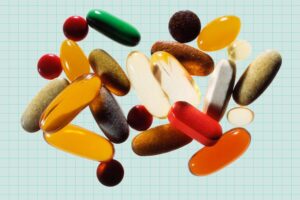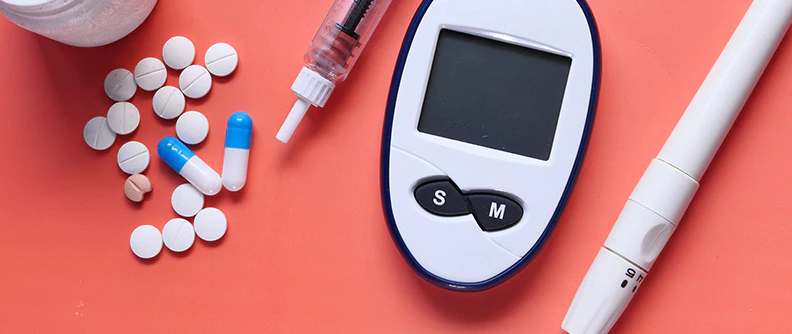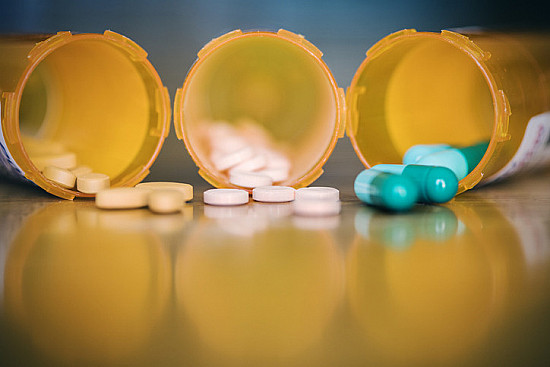Managing blood glucose levels is paramount for individuals with diabetes. Glucose medication plays a crucial role in this management, stabilizing blood sugar levels and preventing complications. However, the variety of medications available can be overwhelming. This blog aims to provide a comprehensive guide to understanding glucose medication, including its types, uses, and considerations.
Contents
Is Glucose Managed with Medicines?

Glucose levels can be managed with medications that work through various mechanisms to regulate blood sugar levels in individuals with diabetes. Here’s a general overview of how medications work in managing glucose levels:
- Enhancing Insulin Production or Sensitivity: Some medications work by stimulating the pancreas to produce more insulin or by making the body’s cells more sensitive to insulin. Insulin is a hormone that helps cells absorb glucose from the bloodstream, reducing blood sugar levels.
- Reducing Glucose Production: Other medications lower blood sugar levels by reducing the liver’s glucose production. The liver naturally produces glucose, but in individuals with diabetes, this process can be overactive, leading to elevated blood sugar levels.
- Increasing Glucose Excretion: Certain medications promote the excretion of glucose through the urine. By blocking the reabsorption of glucose by the kidneys, these medications help to remove excess glucose from the body, thereby lowering blood sugar levels.
- Slowing Gastric Emptying and Suppressing Appetite: Some medications work by slowing the emptying of the stomach and suppressing appetite. By delaying the digestion and absorption of carbohydrates, these medications help to prevent spikes in blood sugar levels after meals.
- Balancing Hormones Involved in Glucose Regulation: Certain medications target hormones involved in glucose regulation, such as glucagon-like peptide-1 (GLP-1) and dipeptidyl peptidase-4 (DPP-4). These medications stimulate insulin secretion, inhibit glucagon release, and promote satiety, contributing to better blood sugar control.
- Combination Therapy: In some cases, individuals may require combination therapy, where two or more medications with different mechanisms of action are used together to achieve better glucose control. This approach allows for synergistic effects and may be necessary for individuals with more severe or poorly controlled diabetes.
Types of Glucose Medication
Glucose medication encompasses a variety of drugs used to manage blood sugar levels in individuals with diabetes. These medications work through different mechanisms to achieve glycemic control and prevent complications associated with hyperglycemia. Here are five main types of glucose medication:
Insulin

Insulin is a hormone produced by the pancreas that plays a crucial role in regulating blood glucose levels. It facilitates the uptake of glucose into cells, where it is used for energy or stored for future use. In individuals with diabetes, either the pancreas does not produce enough insulin (Type 1 diabetes) or the body’s cells become resistant to insulin’s effects (Type 2 diabetes). Insulin therapy is essential for managing diabetes and preventing complications associated with high blood sugar levels.
There are several types of insulin, classified based on their onset, peak, and duration of action:
- Rapid-acting insulin: These insulins start working within 15 minutes of injection and peak within 1-2 hours. Examples include insulin lispro, insulin aspart, and insulin glulisine.
- Short-acting insulin: Also known as regular insulin, these insulins typically start working within 30 minutes to an hour and peak within 2-3 hours. Regular insulin is usually taken 30 minutes before meals to cover the rise in blood sugar after eating.
- Intermediate-acting insulin: These insulins have a slower onset and longer duration of action compared to rapid-acting and short-acting insulins. Examples include NPH insulin and insulin detemir.
- Long-acting insulin: Long-acting insulins provide basal insulin coverage throughout the day and night, with relatively stable blood sugar levels between meals and overnight. Examples include insulin glargine and insulin degludec.
Insulin can be administered via injections using syringes, insulin pens, or insulin pumps. The dose and timing of insulin therapy vary depending on individual factors. These are such as diabetes type, insulin sensitivity, carbohydrate intake, physical activity, and other medications.
Metformin
Metformin is a first-line oral medication for the treatment of Type 2 diabetes. It belongs to the class of drugs known as biguanides and works by reducing glucose production in the liver and improving insulin sensitivity in muscle cells. Metformin does not stimulate insulin secretion from the pancreas but instead enhances the body’s response to insulin, allowing glucose to enter cells more effectively. Additionally, metformin may decrease the absorption of glucose from the intestines, further lowering blood sugar levels.
Metformin is usually taken with meals to reduce gastrointestinal side effects such as nausea and diarrhea. It can be used alone or in combination with other oral medications or insulin therapy to achieve optimal glucose control. Metformin has been shown to reduce the risk of cardiovascular events and improve outcomes in individuals with Type 2 diabetes.
Sulfonylureas
Sulfonylureas are a class of oral medications commonly used in the treatment of Type 2 diabetes. They work by stimulating the pancreas to release more insulin, thereby lowering blood sugar levels. Sulfonylureas bind to specific receptors on pancreatic beta cells, leading to increased insulin secretion. Examples of sulfonylureas include glyburide, glipizide, and glimepiride.
Sulfonylureas are typically taken once or twice daily before meals. They can be used as monotherapy or in combination with other oral medications or insulin therapy to achieve glycemic control. However, sulfonylureas may cause hypoglycemia (low blood sugar) as a side effect, especially in elderly individuals or those with kidney or liver impairment. Therefore, careful monitoring of blood glucose levels is necessary when using sulfonylureas.
DPP-4 Inhibitors
Dipeptidyl peptidase-4 (DPP-4) inhibitors are a class of oral medications used in the treatment of Type 2 diabetes. They work by inhibiting the enzyme DPP-4, which breaks down incretin hormones such as glucagon-like peptide-1 (GLP-1). By inhibiting DPP-4, these medications prolong the action of GLP-1, which stimulates insulin secretion and suppresses glucagon release, leading to lower blood sugar levels.
DPP-4 inhibitors are typically taken once daily with or without food. They can be used as monotherapy or in combination with other oral medications or insulin therapy to achieve glycemic control. Examples of DPP-4 inhibitors include sitagliptin, saxagliptin, and linagliptin. These medications are generally well-tolerated and have a low risk of hypoglycemia as a side effect.
SGLT2 Inhibitors
Sodium-glucose cotransporter-2 (SGLT2) inhibitors are a class of oral medications used in the treatment of Type 2 diabetes. They work by blocking the reabsorption of glucose in the kidneys, leading to increased glucose excretion in the urine. By promoting the removal of excess glucose from the body, SGLT2 inhibitors help to lower blood sugar levels. It is independent of insulin.
SGLT2 inhibitors are typically taken once daily with or without food. They can be used as monotherapy or in combination with other oral medications or insulin therapy to achieve glycemic control. Examples of SGLT2 inhibitors include canagliflozin, dapagliflozin, and empagliflozin. These medications have been shown to reduce the risk of cardiovascular events and kidney disease progression in individuals with Type 2 diabetes.
Considerations for Glucose Medication

When considering glucose medication for managing diabetes, several important factors should be taken into account to ensure effective treatment and minimize potential risks. Here are some key considerations to keep in mind:
Type of Diabetes
The type of diabetes (Type 1, Type 2, gestational diabetes) plays a significant role in determining the appropriate medication regimen. For example, individuals with Type 1 diabetes require insulin therapy, while those with Type 2 diabetes may initially be managed with oral medications before progressing to insulin therapy if needed.
Individual Health Status
Factors such as age, overall health, presence of comorbidities (e.g., heart disease, kidney disease), and diabetes-related complications influence medication selection and dosing. Certain medications may be contraindicated or require dose adjustments in individuals with specific health conditions.
Treatment Goals
Treatment goals should be personalized based on individual needs, preferences, and lifestyle factors. Goals may include achieving target blood glucose levels (as determined by HbA1c levels), preventing hypoglycemia, managing weight, reducing the risk of cardiovascular complications, and improving overall quality of life.
Efficacy and Safety
Consideration should be given to the efficacy and safety profiles of glucose medications. Some medications may be more effective in lowering blood sugar levels but may also carry a higher risk of side effects or adverse reactions. It’s essential to balance the benefits and risks of each medication and choose the option that provides the best balance for the individual.
Side Effects
All glucose medications have the potential to cause side effects, ranging from mild to severe. Common side effects may include gastrointestinal discomfort, hypoglycemia, weight gain, fluid retention, and allergic reactions. It’s important to discuss potential side effects with a healthcare provider and monitor for any adverse reactions while taking medication.
Cost and Accessibility
The cost of glucose medications can vary significantly depending on factors such as insurance coverage, generic alternatives, and geographic location. Cost considerations may impact medication adherence and should be taken into account when selecting a treatment regimen.
Lifestyle Factors
Lifestyle factors such as diet, exercise, smoking status, alcohol consumption, and stress levels can influence blood glucose levels and medication effectiveness. Medication regimens should be tailored to accommodate individual lifestyle preferences and routines.
Drug Interactions
Glucose medications may interact with other medications, supplements, or herbal remedies, potentially affecting their efficacy or safety. It’s important to review all current medications with a healthcare provider to identify and minimize the risk of drug interactions.
Patient Education and Adherence
Proper education about glucose medications, including dosing instructions, administration techniques, potential side effects, and monitoring requirements, is crucial for promoting medication adherence and self-management skills. Patients should feel empowered to ask questions and seek clarification about their treatment plan.
Benefits of Glucose Medications

Glucose medications offer a range of benefits for individuals with diabetes. It helps them to manage blood sugar levels effectively and reduces the risk of complications associated with hyperglycemia. Here are some key benefits of glucose medications:
Blood Sugar Control
Glucose medications help regulate blood sugar levels, preventing both hyperglycemia (high blood sugar) and hypoglycemia (low blood sugar). By stabilizing blood glucose levels within the target range, these medications reduce the risk of short-term symptoms and long-term complications associated with uncontrolled diabetes.
Prevention of Complications
Effective blood sugar control with glucose medications can help prevent or delay the onset of diabetes-related complications such as cardiovascular disease, kidney disease, nerve damage (neuropathy), eye damage (retinopathy), and lower limb amputations. By minimizing the impact of hyperglycemia on various organs and systems in the body, glucose medications contribute to overall health and well-being.
Improved Quality of Life
Managing blood sugar levels with glucose medications can improve the overall quality of life for individuals with diabetes. By reducing symptoms of hyperglycemia such as excessive thirst, frequent urination, fatigue, and blurred vision, these medications help individuals feel better and function optimally in their daily lives.
Customized Treatment Options
Glucose medications come in various forms, including oral medications, injectable therapies, and insulin therapy. This variety allows healthcare providers to tailor treatment regimens to individual needs, preferences, and lifestyle factors. Customized treatment options increase the likelihood of medication adherence and treatment success.
Flexibility and Convenience
Many glucose medications offer flexibility and convenience in terms of dosing frequency, administration methods, and timing of doses. Oral medications, for example, can often be taken once or twice daily with meals, while some injectable therapies require less frequent dosing (e.g., weekly or monthly injections). This flexibility accommodates individual preferences and routines, making it easier for individuals to adhere to their treatment plans.
Cardiovascular Benefits
Some glucose medications have been shown to provide additional cardiovascular benefits beyond blood sugar control. For example, certain classes of medications, such as SGLT2 inhibitors and GLP-1 receptor agonists, have demonstrated cardiovascular risk reduction and mortality benefits in individuals with Type 2 diabetes, particularly those with established cardiovascular disease or high cardiovascular risk.
Kidney Protection
Certain glucose medications, such as SGLT2 inhibitors, have been shown to provide kidney protection by reducing the risk of kidney disease progression and improving renal outcomes in individuals with Type 2 diabetes. These medications may help preserve kidney function and delay the need for dialysis or kidney transplantation in high-risk patients.
Weight Management
Some glucose medications, such as GLP-1 receptor agonists, have beneficial effects on weight management. This is by promoting weight loss or preventing weight gain. This can be particularly beneficial for individuals with Type 2 diabetes who are overweight or obese, as weight loss can improve insulin sensitivity and metabolic control.
Conclusion
Glucose medication is a cornerstone of diabetes management, helping individuals achieve and maintain optimal blood sugar levels. Understanding the types, uses, and considerations associated with these medications empowers individuals to make informed decisions in collaboration with healthcare providers.
By tailoring treatment plans to individual needs and preferences, individuals with diabetes can effectively manage their condition and reduce the risk of complications. Always consult with a healthcare professional for personalized guidance on glucose medication management.
Do you want to get rid of diabetes? Join our online diabetes treatment program and reverse Diabetes naturally through lifestyle changes such as a Personalized Diet plan, Exercise, Yoga, dieticians, and health coaches.

